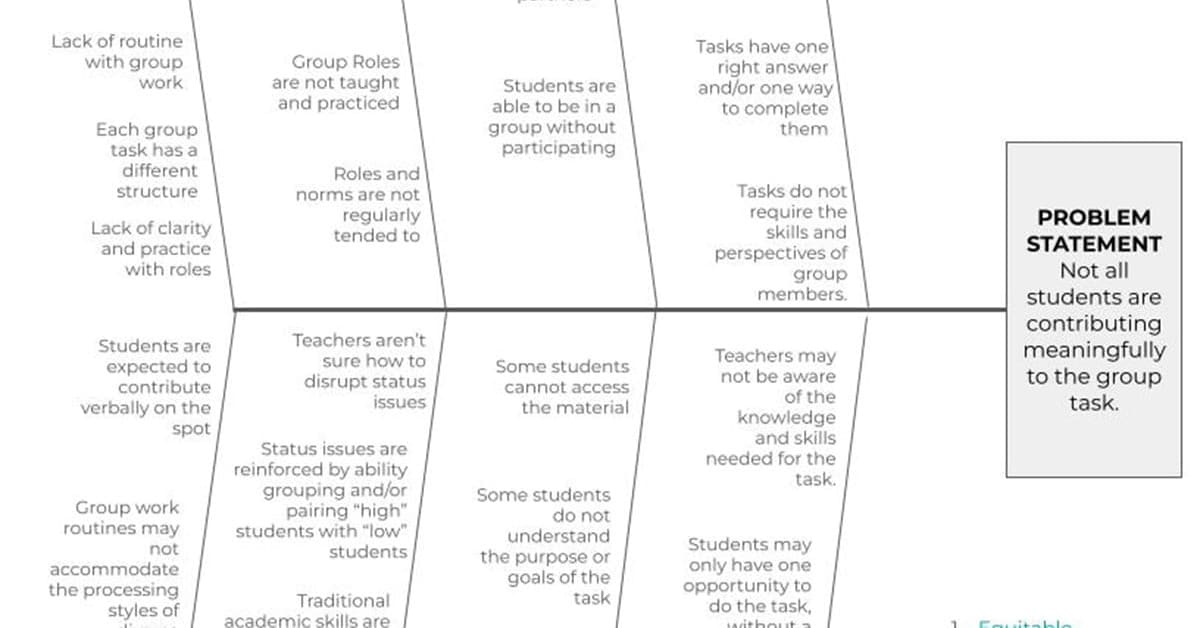
Back in 2015 a group of teachers working to improve groupwork generated this fishbone diagram to represent their thinking about the problem.
The group had defined the problem like this: “Not all students are making meaningful contributions in group work” and wondered “How are we setting up our classrooms to yield this outcome?” The teachers interviewed students and generated lots of ideas as to what was going on that led to this outcome, then organized their ideas into a fishbone diagram. At the end of each fishbone is a major factor that the teachers identified. Along that bone are examples of how that factor plays out to create the problem.
For example, the teachers believed that inadequate group structures and scaffolds were leading to inequitable participation in groupwork. This played out in different ways–group roles did not all have equal status, there was a lack of routine with group work, each group task had a different structure, and there was a lack of clarity and practice with roles.
A quick note: the original version of this fishbone diagram revealed some deficit thinking. For example, while student attributes like extraversion and introversion are important to design for in group work, that diversity itself is NOT the cause of the inequitable participation in group work.
The fishbone was later revised to reflect the team’s evolving understanding of their own agency within the problem. Given that student diversity is part of every classroom, what can I do as a teacher to support equitable group work? What am I not doing yet?
Additionally, the updated fishbone diagram draws from research on the topic of equitable group work, rather than just relying on the perceptions of teachers and students about the problem.
When your team creates a fishbone diagram, you can expect that your diagram is definitely incomplete, possibly incorrect. The beauty of learning together through improvement is that you will continue to deepen your understanding. Revising your fishbone diagram to reflect new learning can your team keep track of the group’s evolving understanding.
